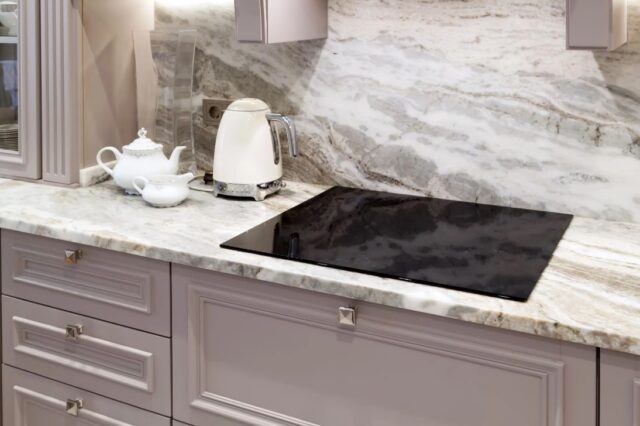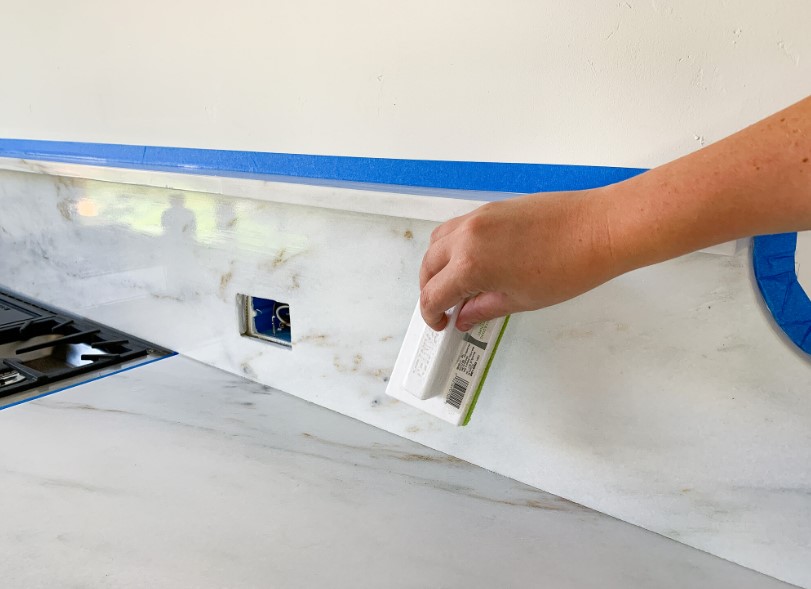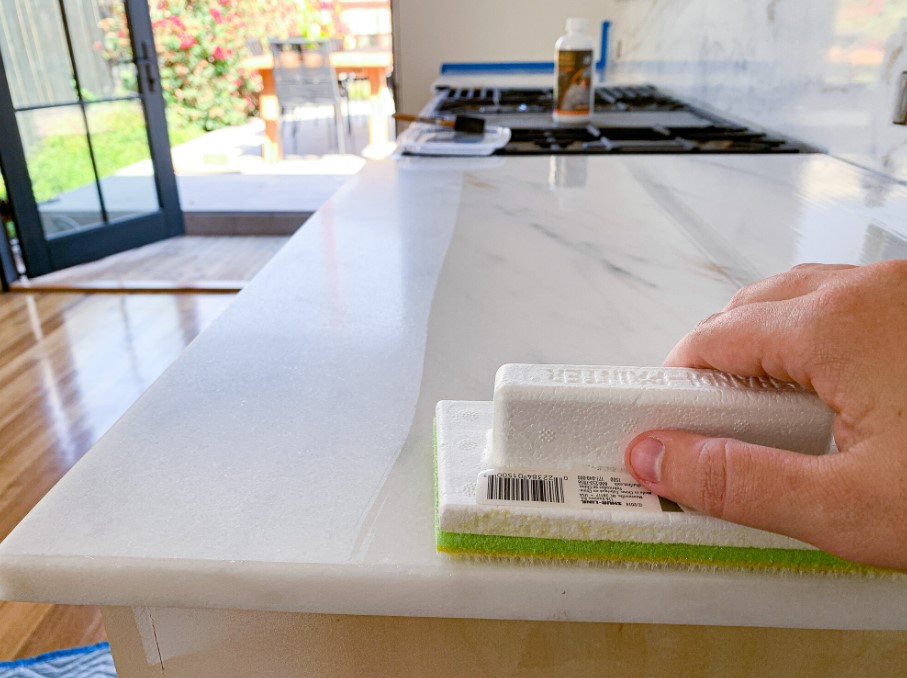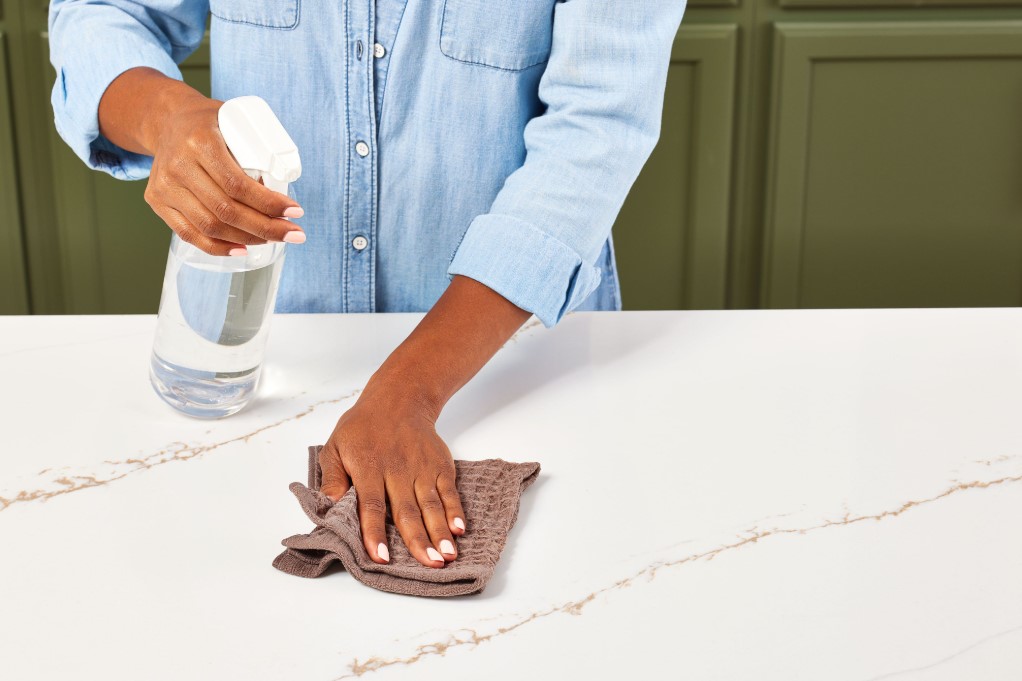
Natural stone surfaces are an investment in elegance and functionality. Proper care ensures they retain their allure for years.
Sealing marble countertops effectively is critical to keeping them stain-free and lustrous. Whether you are a first-timer or someone seeking to refine your technique, this guide offers practical steps, tips, and maintenance advice.
Key Points
- Sealing protects the porous surface from stains and moisture.
- Preparation is crucial for optimal sealing results.
- Use a high-quality sealant suitable for natural stone.
- Regular re-sealing ensures long-term durability.
- Proper cleaning extends the sealant’s lifespan.
Why Sealing Is Essential for Marble Surfaces
Sealing marble countertops prevents damage from stains and moisture, safeguarding the stone’s natural beauty. The porous nature of the material makes it vulnerable to absorbing liquids, leading to unsightly marks or long-term issues like etching. A high-quality sealant acts as a barrier, providing peace of mind while you enjoy your space.
Renue Systems, expert services for marble restoration and sealing, combines decades of experience with proven techniques. Their diamond honing process restores dull or damaged stone to its original brilliance, making professional assistance an option worth considering for heavily worn surfaces. They offer specialized care tailored to your needs, ensuring your investment remains in top condition.
Preparing Marble Countertops for Sealing

Preparation ensures the best results. Begin by clearing the surface of all items, leaving no obstacles in your workspace. Once the area is clear, focus on cleaning. Use a pH-neutral stone cleaner to remove dirt, oils, or residue. Acidic or abrasive cleaners can harm the surface, so avoid those at all costs.
Drying is the next critical step. Allow the surface to air dry for at least 24 hours to eliminate any moisture trapped in the pores. This ensures that the sealant adheres properly, forming an effective barrier. Before applying the sealant, inspect the surface for any damage. Address scratches or etching beforehand to avoid sealing them in permanently.
Selecting the Right Sealant for Marble Countertops
Choosing the correct sealant matters. The two most common types are penetrating sealants and topical sealants.
- Penetrating sealants ─ These soak into the stone, creating a protective barrier from within. They are ideal for natural stones like marble because they provide long-lasting protection without altering the surface’s appearance.
- Topical sealants ─ These form a protective layer on the surface. While they add extra protection, they can wear off quickly in high-traffic areas and require frequent reapplication.
Always select a product designed specifically for marble. Using the wrong type can result in discoloration or improper bonding, compromising the seal.
Step-by-Step Guide to Sealing Marble Countertops
- Apply the sealant ─ Pour a small amount onto the surface, working in sections to ensure thorough coverage.
- Spread evenly ─ Use a clean, lint-free cloth or a foam brush to distribute the sealant. Follow the manufacturer’s instructions closely for optimal results.
- Allow absorption ─ Let the sealant sit for 10-15 minutes, allowing it to penetrate the stone’s pores.
- Remove excess ─ Wipe away any remaining sealant with a clean, dry cloth to prevent sticky residue.
- Cure the sealant ─ Allow the surface to sit undisturbed for at least 24 hours. Avoid placing items on the countertop or exposing them to moisture during this time.
A well-sealed surface enhances both durability and aesthetics, ensuring your investment remains protected.
Avoiding Common Mistakes When Sealing

Mistakes can compromise the effectiveness of sealing efforts. Here are pitfalls to avoid:
- Neglecting cleaning ─ Any dirt, grease, or residue left on the surface can interfere with the sealant’s adhesion.
- Overapplying sealant ─ Using too much product can result in a sticky, uneven finish.
- Skipping reapplication ─ Sealants wear off over time. Regular re-sealing is necessary to maintain protection.
- Using harsh chemicals ─ Acidic or abrasive cleaners can damage the sealant and the marble itself.
Taking the time to follow the correct procedures ensures a flawless finish and long-lasting results.
Routine Maintenance for Sealed Marble Countertops
Even with proper sealing, regular upkeep is essential to preserve the surface. A consistent cleaning routine ensures your countertops stay looking their best. Use a soft cloth and a pH-neutral cleaner for daily maintenance. Avoid abrasive pads or sponges, which can scratch the surface and compromise the seal.
Spills should be wiped up immediately to prevent staining. Acidic substances like citrus juices, wine, or vinegar can etch the surface if left too long. For added protection, consider using coasters and cutting boards to minimize direct contact with potentially harmful substances.
Pro tip ─ Test the sealant’s effectiveness by sprinkling a few drops of water on the surface. If the water beads up, the sealant is still intact. If it absorbs, it’s time to re-seal.
Benefits of Sealing Marble Surfaces Regularly
Regular sealing offers numerous advantages beyond stain prevention. It enhances the stone’s natural color and sheen, giving it a polished, high-end look. A well-sealed surface also resists moisture, reducing the risk of mold or mildew development in damp environments.
Another benefit is the ease of cleaning. With a proper sealant, spills can be wiped away effortlessly, reducing maintenance time. Additionally, regular sealing prolongs the life of the countertop, preserving its value and beauty over time.
How to Handle Stains and Etching Before Sealing

Stains or etching should be addressed before applying a sealant. Stains can often be removed using a poultice made of baking soda and water. Apply the paste to the affected area, cover it with plastic wrap, and let it sit for 24 hours before wiping it away. Repeat as needed.
For etching caused by acidic substances, professional polishing may be required. Contact a restoration expert to repair severe damage before sealing to ensure the surface is properly restored.
FAQs About Sealing and Maintenance
How often should marble countertops be sealed? Sealing every 6-12 months ensures adequate protection. Test the surface periodically for absorption.
What’s the best cleaner for sealed marble? A pH-neutral stone cleaner is safest. Avoid vinegar or citrus-based products.
Can I seal marble myself, or should I hire a professional? While sealing is manageable as a DIY project, professional services provide better results for heavily used or damaged surfaces.
Preserving the Beauty of Marble Countertops
Sealing your countertops is an essential step to maintain their appearance and durability. By following proper techniques and adopting good maintenance habits, you can protect the surface from damage, ensuring it remains a centerpiece in your home for years to come.
Regular upkeep, coupled with professional assistance when needed, ensures your investment in natural stone surfaces pays off, keeping them functional and stunning for a lifetime.






